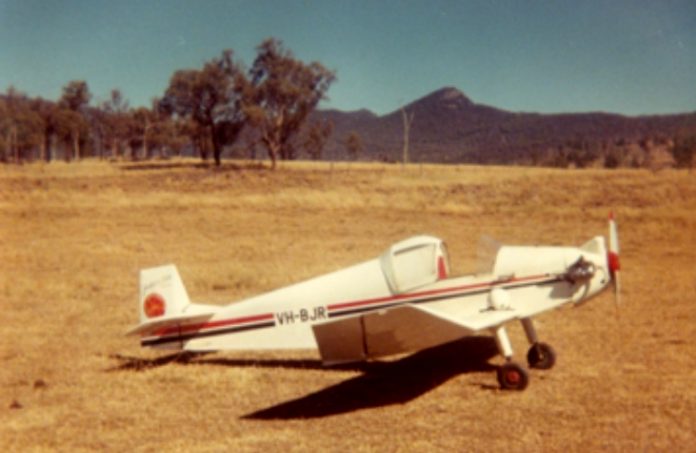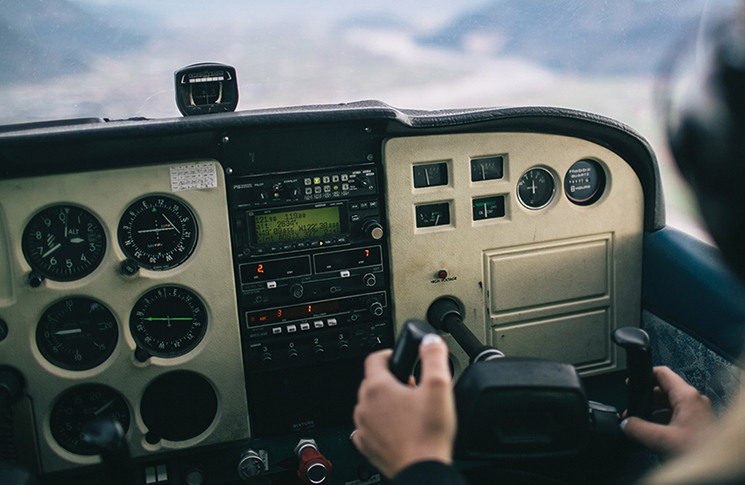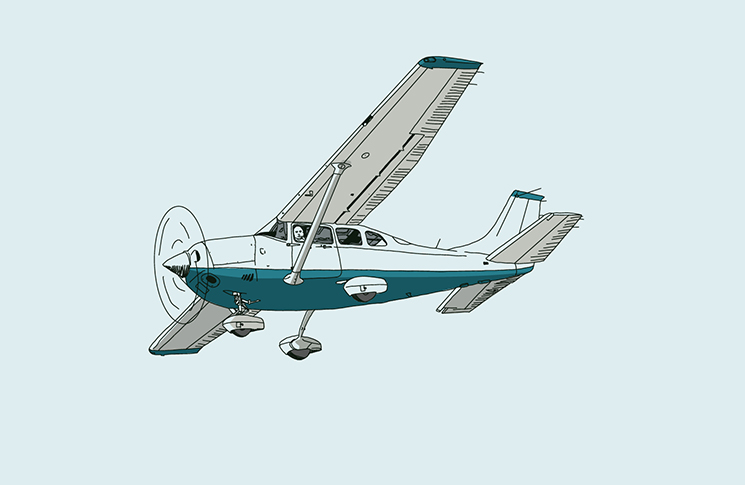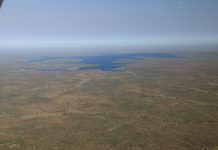by John Michell, Flight Safety Australia reader
The Jodel D9 aeroplane was a very light wood and fabric aircraft that would now easily fit into the RAA aviation field. I had owned this very basic aircraft, powered by a 1200 cubic centimetre converted Volkswagen engine, for about five years and flown nearly three hundred hours in it. My total flying experience was about six hundred hours.
I had decided to take it from Narrabri to Morwell for the Sport Aircraft Association annual Easter fly-in, leaving on the Thursday. The aircraft had no radio, and no brakes. Having refuelled at Dubbo, on departure into wind from the grass cross runway, I was confronted by a Beech Bonanza on a collision course departing the main runway. I completed a 360-degree low level turn and then continued to a friend’s property near Yass for the night. I would later get a ‘please explain’ letter from the authorities for doing a 180-degree low level turn at Dubbo. On explanation of the facts no further action was taken.
The next day I was refuelling at Albury airport when two young men stepped out of a car and walked over to introduce themselves. They were from South East Queensland and were driving to the Morwell function. During the conversation they asked which way I was tracking to my destination. When I explained I had a direct line drawn on my map, they were quick to explain that that would overfly some of the worst tiger country in Australia. I had extensive navigation experience in northern Australia but had never ventured south.
I immediately revised my flight plan to track via Lake Eildon, adding about twelve minutes to my flight time. My first navigation experience in Victoria was to find that the railway line on my map did not exist on the ground. Then, South of Wangaratta, the engine suddenly lost ninety per cent of its power! I conducted a successful forced landing into a stubble paddock on a dairy farm—my first experience on Victorian soil!
My landing went unnoticed and on walking a few hundred metres to the farm house, I found the hostess entertaining some neighbours to a morning tea. When she handed me a cup, I had great difficulty in keeping it on the saucer due to my now-shaking hands! A telephone call to Albury Flight Service to cancel SAR and the official formalities were completed.
I managed to locate an engineer in Wangaratta, and we discovered that the recently overhauled magneto (it only had one) had brass bushes which had not been lubricated. One of these had seized and then released, putting the timing out by about forty degrees. He did the bushes up on his lathe, reinstalled the magneto, timed the engine by ear, and I flew out of the paddock to continue my journey on Easter Saturday, after some extremely friendly hospitality and a ten-dollar engineering bill!
These days it is relatively easy to check the hostility of proposed flight tracks into unfamiliar territory on Google Earth. I was extremely lucky on that occasion that I was afforded the good advice of people who knew the country I was headed over, probably saving my life. A small tracking dog-leg in a flight plan can really be a life saver and usually adds very little time to the trip.






You cannot beat local knowledge! Costs nothing but is priceless in value. Your only cost is taking the time to listen.
very well written enjoyed the read
What is “Tiger Country” Pls ??
A place, either real or figurative, where there is a perceived threat or danger. Often referred to as really rugged country where a successful forced landing and being quickly found would be very doubtful. Best to make peace with your maker if engine splutters over “Tiger Country”
“Tiger Country” is a euphemism for country where you wouldn’t want to be trying to make a forced landing. Wilderness, alpine and heavily forested areas are good examples. As the author says, a small dog leg may be all that is required to ensure safety in an emergency.
It is where the tigers live in Australia. If you land there you will, most likely, be eaten.
Yours is definitely the best explanation!! 😆
It’s where the last surviving Tasmanian Tigers (Thylacine) live. Very harsh territory, that’s why they have managed to elude all attempts of spotting and why you wouldn’t want to land there, you would never be found.
If you don’t want to land on it don’t fly over it!
Yep Rob, you nailed it! :-)
You had several hundred hrs experience & you had no idea what the terrain was like you had proposed to fly over? ….hmmmmmm, I expect that from a novice (but even then that’s no excuse) you where very lucky to have had some advice thrown at you !!!! You where lucky we didn’t read about you in the old crash comics!
Walter I have to say that, after reading your many critical posts about the pilots in these “Close Call” articles, I can only conclude that you believe you are God’s greatest gift to World Aviation, and that the rest of us should consider giving flying away until we can match your self-perceived superior prowess.
Seriously – who are you trying to kid? I for one find these articles extremely valuable, because pilots who have made mistakes have been brave enough to put their experience on the table so that the rest of us can learn from them. I salute them all – they deserve our support and encouragement, not ill-informed and childish, anonymous criticism.
If you don’t like the articles, don’t read them. If you cannot contribute anything positive, then don’t contribute at all. Go back to social media where trolls normally reside. Thank you.
No need to thank me Eric, you obviously follow what I say (that’s a sad life you lead right there !) so who’s the troll? It’s called an opinion & if YOU don’t like a different opinion then I suggest YOU go back to social media, Thanks you:-):-)
Come on guys, we ( aviators ) are better than that. Surely, everyone can have their say, respectfully, politely and constructively. Lets always be positive and move forward
All the articles published here are of value, to all of us. We are always learning.
fly well, fly safe
Yes ..I have noticed Walter’s propensity to finger wag ..If every comment was a Walter like response,no one would fess up I suspect.
Notwithstanding, Walter type comments can be helpful if some positive suggestions are made, which surprisingly, Walter does do from time to time :)
Great read and the early days of flying the light sport no radio, converted Veedub engine and no brakes, that’s how they rolled :)
In regards to Walter’s contribution to Aviation I would not worry, I highly suspect he has no flight time other than home computer
To the Walter haters. (clueless Nigel & Eric) I expect some feedback that’s negative, pilots can be rather princesses & hurt when their ideas aren’t shared by others. I look at things differently than most, 40yrs driving planes commercially & privately (Sorry Nigel you couldn’t be more wrong there!) with zero incidents means I make sure I know what I am doing to the best of my ability. We all make mistakes but some of the stuff I read here I shake my head at as it ought not to happen & I say as much! Don’t like it? Move right along !!
I think that for feedback to be effective it needs to be presented in a tactful and encouraging way. This will inspire the recipient to respond in the desired way and result in a “win-win” situation.
I think that compassion is a wonderful human quality that can forge strong bonds of friendship.
Flying over terrain described by the author takes special pre-flight planning requiring special skills to reduce the odds of being eaten alive by tigers. No doubt at all, Walter is up to the job! 40 years, zero incidents and always at the top of is game!
If Walter would please provide proof of his endeavors as a Pilot, the rest of us (who kneel in shame from the “Walter” Headshake” along with those scathing words of “ought not to happen”) could sure learn a lot.
The person who should be writing these articles should be Walter. Sure, we all can learn from any flight, but to learn from a man like Walter! Aviation would become a zero accident zone. Motto: “Accidents are not allow”.
I agree with “aerodarts” sentiments. This is a golden opportunity for Walter to demonstrate how he identfies areas that are “Tiger Country” using maps, flight charts and other information. Perhaps Walter also examines Google Earth?. Of particular interest would be how to plan flight routes in situations where “Tiger Country” cannot be avoided. That would surely result in a “win win” situation for everybody contributing to this discussion. This information could even save the life of one of the readers in the future.
Hahah Love these feedbacks, makes for entertaining reading:-)
Reminds me of good film back in the 50s-60s called “The Great Walter Mittie”.
Speaking as a D9 owner, I’m impressed by John Mitchells confidence in undertaking such a long flight [approx. 600miles / 1000kms, according to Google Earth] in what is definitely not a x-country machine. And over some pretty remote land-scapes. Congrats John for your hearty endeavour. Presumably the trip back home was uneventfull. VW engines have a proven record of reliability — but even the most caressed model, like any engines, sometimes quit. It’s then that real pilotage is called for. You passed the test John!